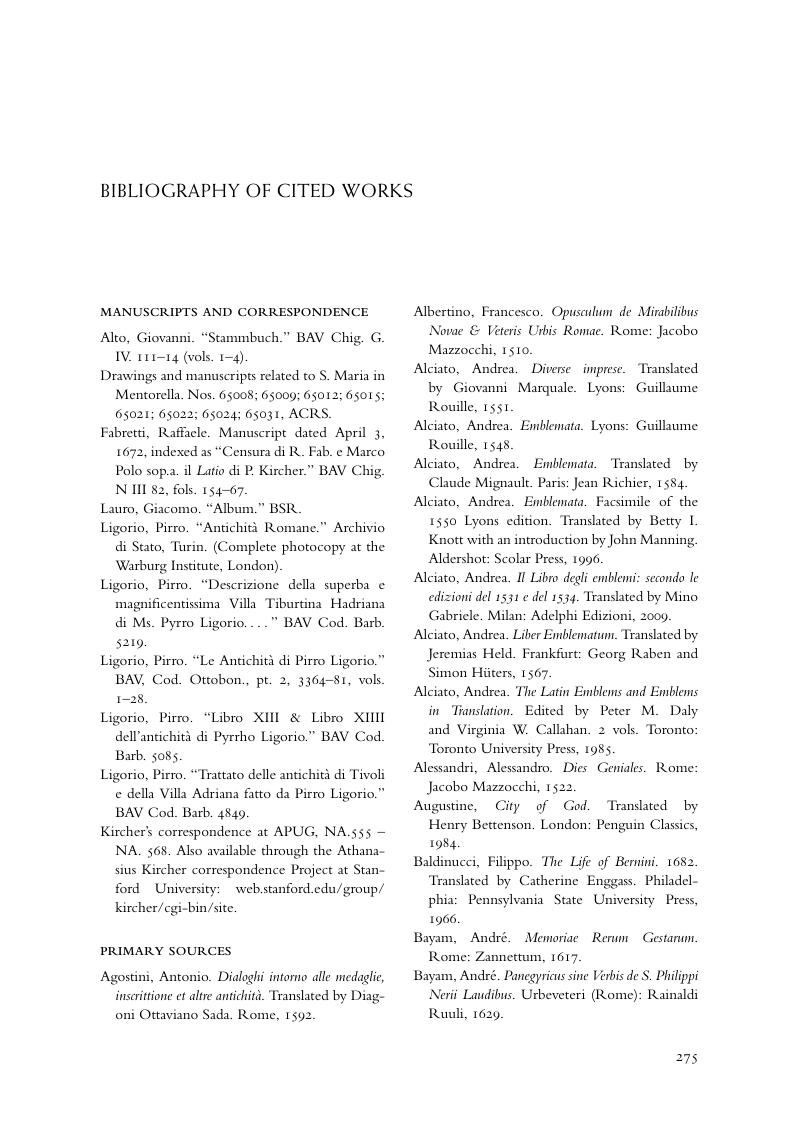Book contents
- Baroque Antiquity
- Baroque Antiquity
- Copyright page
- Dedication
- Contents
- Illustrations
- Book part
- Introduction
- Chapter One The Archaeology of Prints
- Chapter Two Custom-Made Rome
- Chapter Three Moral Monuments
- Chapter Four Peter Versus Jupiter
- Chapter Five Father Kircher's Retreats
- Chapter Six Christ in Tivoli
- Conclusion
- Notes
- Glossary
- Bibliography of Cited Works
- Index
- References
Bibliography of Cited Works
Published online by Cambridge University Press: 05 September 2016
- Baroque Antiquity
- Baroque Antiquity
- Copyright page
- Dedication
- Contents
- Illustrations
- Book part
- Introduction
- Chapter One The Archaeology of Prints
- Chapter Two Custom-Made Rome
- Chapter Three Moral Monuments
- Chapter Four Peter Versus Jupiter
- Chapter Five Father Kircher's Retreats
- Chapter Six Christ in Tivoli
- Conclusion
- Notes
- Glossary
- Bibliography of Cited Works
- Index
- References
Summary

- Type
- Chapter
- Information
- Baroque AntiquityArchaeological Imagination in Early Modern Europe, pp. 275 - 292Publisher: Cambridge University PressPrint publication year: 2016



